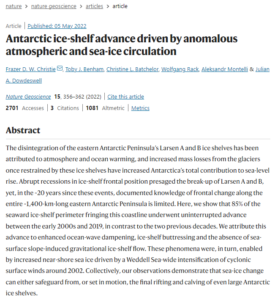Humans are likely causing some warming, but substantial scientific disagreement exists on whether there will be significant impacts
ARLINGTON HEIGHTS, IL (November 8, 2022) – A new poll of scientists conducted by Fairleigh Dickinson University found that only 59 percent of respondents think global climate change will cause “significant harm” to the “living conditions for people alive today.” That is far short of the “97 percent consensus” narrative pushed by climate alarmists and their media allies across the globe.
The survey, conducted in September and October 2022 by Fairleigh Dickinson University and commissioned by The Heartland Institute, polled only professionals and academics who held at least a bachelor’s degree in the fields of meteorology, climatology, physics, geology, and hydrology.
The key question of the survey asked: “In your judgement, what will be the overall impact of global climate change on living conditions for people alive today, across the globe?” Fifty-nine percent said “significant harm.” Thirty-nine percent said either “significant improvement,” “slight improvement,” “no change,” or “slight harm.” Two percent were not sure.
Among respondents with the most experience – those at least 50-years-old – less than half expect significant harm for people alive today. Scientists 30-years-old and younger were the only age group for which more than 60 percent expect significant harm.
Like prior surveys of scientists, the new poll shows the vast majority of scientists agree the planet is warming. On average, respondents attributed 75 percent of recent warming to human activity. More importantly, scientists disagree among themselves on whether future warming will be much of a problem.
The poll also found only 41 percent of respondents believe there has been a significant increase in the frequency of severe weather events. The majority say there has been no change or only a slight increase.
In reality, objective data show hurricanes, tornadoes, wildfires, drought, and other extreme weather events have become less frequent in recent decades.


 This second business-as-usual prediction was that there would be 1.8 C° warming from preindustrial times to 2030. Deducting the 0.45 C° warming up to 1990, the prediction amounted to 1.35 C° or about 0.34 C°/decade. Thus, IPCC predicted 0.3-0.34 C°/decade medium-term warming. However, only 0.14 C°/decade has occurred since 1990
This second business-as-usual prediction was that there would be 1.8 C° warming from preindustrial times to 2030. Deducting the 0.45 C° warming up to 1990, the prediction amounted to 1.35 C° or about 0.34 C°/decade. Thus, IPCC predicted 0.3-0.34 C°/decade medium-term warming. However, only 0.14 C°/decade has occurred since 1990
